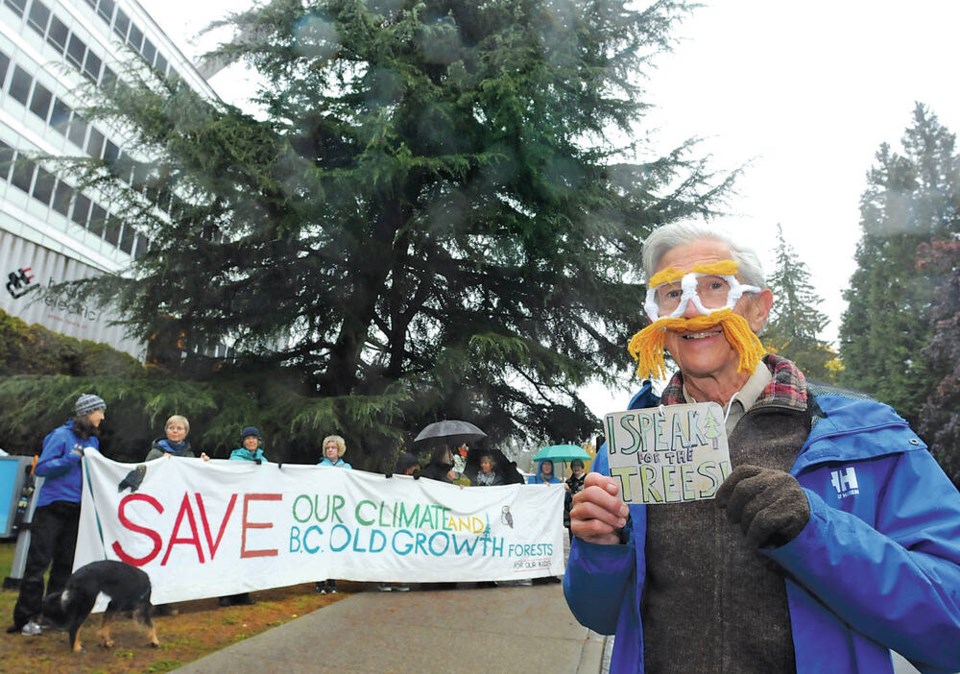The City of North Vancouver has started planting seeds to ensure residents have a healthy population of trees over the next 30 years and beyond.
At a meeting Monday evening, council heard a presentation on the development of a new urban forest plan, along with reports on the current state of the municipality’s canopy and its tree planting program.
Based on findings that residents have a strong connection to the urban forest, the new plan will provide guidance to adapt and expand tree cover in the city, increasing benefits to the community while balancing competing priorities, staff said.
Public engagement will begin early next year, followed by the creation of a draft plan and more feedback, with a final document slated for consideration in winter 2024.
Trees provide a host of benefits in urban areas. Their ability to intercept rainwater can increase the lifespan of stormwater infrastructure, explained environmental sustainability manager Mike Friesen, adding that they also help cool urban spaces.
“The shade provided by trees is critical to avoiding the heat island effect and keeping our city cool as temperatures rise,” he said. “Additionally, trees that shade structures can help to reduce energy use and therefore costs by up to 30 per cent.”
Friesen also noted intangible benefits provided by trees. “[In] our outdoor environments, trees can carry important cultural and emotional significance, as well as providing important places to meet with your friends and fellow residents,” he added.
While canopy cover – a key metric in measuring the health of an urban forest – has remained steady in the city at 20 per cent since 2007, there has been steady tree loss, Friesen said.
Trees have been lost to natural causes, like hemlock looper moths, as well as city growth including the development of housing, upgrading utilities and expanding transportation options. These losses have been offset by North Vancouver’s urban forestry initiatives and the planting of young trees as part of new development, Friesen said.
But other stressors threaten the future of the city’s trees.
“We also know that the urban forest is facing increased stress: drought and extreme heat are impacting tree health,” Friesen said. “As these stresses add up, they increase the vulnerability of trees and limit their ability to respond to pests or invasive species.”
The planner also highlighted the outsized value of older specimens. Trees under 10 metres tall make up more than 50 per cent of the city’s trees, but provide just 20 per cent of the overall canopy. Whereas trees that are 30 or 40 metres tall make up just 10 per cent of the population, while also contributing 20 per cent to the canopy.
Data collected by staff also show that more than half (55 per cent) of trees in the city are on private property. Meanwhile, a related report card identified that the city’s involvement with holders of institutional and large private land is “poor.”
Extending the benefits of the urban forest will involve more focus on areas that will benefit the highest number of residents and guests, Friesen said.
“This means more trees in our urban centre, in and around our public plazas and amenities and along our streets and transportation corridors,” he said.
Council and community are committed to urban forests, mayor says
Street trees are particularly vulnerable to environmental stressors, said Coun. Jessica McIlroy.
“I think we need to look at actually making sure we’re providing permeability, so those trees can thrive and survive in the drought conditions,” she said.
Given that canopy cover of Metro Vancouver cities ranges from 10 to 40 per cent – 18 to 23 per cent in highly urbanized areas like Vancouver and New Westminster – Coun. Don Bell asked if North Vancouver will be developing an increased target, and how that would work given the distribution of trees on different property types.
A new target will be developed, staff replied. Current canopy cover is usually the result of historic land use in a community, said city clerk Amelia Cifarelli.
“As we develop the target for the city, we’ll be looking at the land use and the potential for those land uses, including private land to support additional tree canopy cover,” she said. “And we can use other community’s averages in those land leases to inform some of our benchmarking.”
Against the backdrop of the city’s push for urbanization, Mayor Linda Buchanan said it’s clear that council and the community are committed to urban forests.
“I would just look to how we can be provide more incentivization for all residential, or owners of property, in terms of how they can contribute to increasing the urban forest within the city,” she said.



